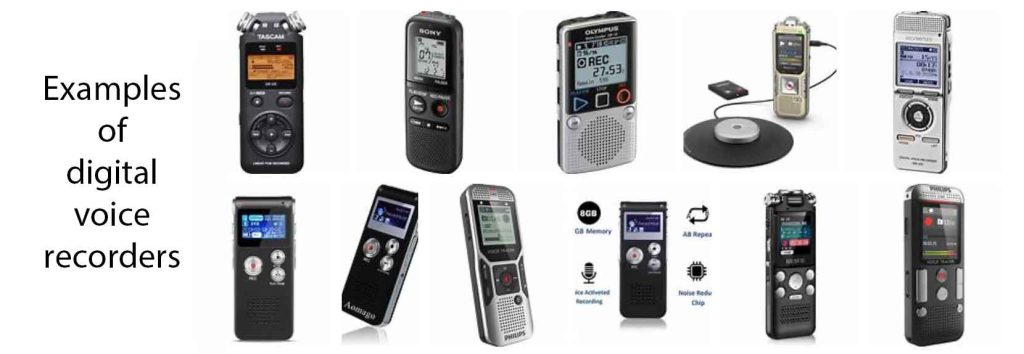While STORY is the most important component,
VOICE is a very close second.
GIFT: Our digital world has given us the ability to leave our “voice” as well as “images” for future generations. Recording your STORY in your own VOICE creates a treasure that only you can share.
PROJECT: Record your loved one telling their favorite story or singing that little tune you have heard all your life creates a priceless memory.
I know from personal experience how wonderful it is to hear Mom singing long after she has gone to her Heavenly home.

Where To Start
Smartphone
All smart phones (both iPhone and Android) provide a good quality basic voice recorder.
- If you have an iPhone, open the Voice Memos app and tap the red record button at the bottom of the screen.
- If you have an Android, open the Voice Recorder (or Sound Recorder) app and click the red button at the bottom of the screen.
There are also Voice Recorder apps with more features you may enjoy.
Check your User Guide for guidance on how to use the Recorder and how to locate and share the recording that you make.
Digital Voice Recorder
If you do not have a Smart Phone, you can pick up a handheld Digital Voice Recorder (not very expensive).
These small recorders are frequently used to record lectures, interviews, meetings, and other voice-based content. The key advantage is their ability to easily capture high-quality recordings.

Digitize Old Tapes
Look around your house and you may find some old cassette tape recordings from years long ago.
These can be a treasure trove of family. memories both VOICE and IMAGES.
Keep in mind that tapes degrade with time. Tapes are especially susceptible to heat, dirt, and magnetism, so get them converted while you can.
While digitizing a cassette is not a complicated process, it DOES require finding the best possible tape player for playback and converting the tape to a new digital file. Beyond the reach of most of us.
As with IMAGES, another alternative would be to have the cassettes or video tapes commercially digitized.
Example
This audio track was digitized from an old recording from our Family Reunion back in 1970.
Tips for Making Digital Recording
To record the best quality audio you can with your smartphone or a handheld voice recorder you need to consider several factors. These include your recording technique, the recording environment, and the device you are using.
Recording Technique and Environment
- Microphone: Before you begin, be sure you know where the microphone is located on your smartphone or handheld recorder. You’ll usually find them on the bottom of the handset, where you speak, and by the cameras.
- Quiet: If you are recording on a smartphone, switch the device to airplane mode so your recording will not be interrupted by notification pings or incoming calls.
- Placement: When you want to record, make sure that fingers, no phone cases, or other things are blocking the microphone. Direct the microphone directly toward and about an arms-length away from the person you want to record.
- Environment: Before making a recording, look around to be sure you are in a quiet location. If you are outdoors try to move away from traffic noise, other conversations, or wind noise. If you are indoors, find a quiet spot away from the hum of appliances or other conversations.
- Consistency: If you are holding the recording device (smartphone or recorder), be sure to hold it steady, pointed at the source, and a consistent distance from the source.
Android Smartphones
On some Android phones you may find a pre-installed app like “Google Recorder” or “Voice Recorder” in your app drawer or by using the search feature. Other Android phones may not have a recorder. Check your device’s user manual or do a web search using your phone’s make and model for specific information.
Recording With Android's Voice Recorder
Step 1: Open the Voice Recorder app. You can usually find it in the app drawer or by searching for “Voice Recorder” in your apps menu.
Step 2: Access recording options. Tap on the app to open it, and you’ll typically see options for recording, playing, and managing your recordings.
Step 3: Start a new recording: Click on the “Record” button, which often looks like a red circle or microphone icon.
Step 4: Record your audio. Speak into your phone’s microphone or place it near the sound source you want to record.
Step 5: Save your recording. After recording, tap the “Stop” button. You’ll be prompted to save the recording with a name of your choice. Enter any name and tap “Save” or “Done.”
iPhone Smartphones
Apple has included the “Voice Memos” app in all of the iPhones since the release of iPhone OS3 in 2009.
Recording With iPhone's Voice Memos
iPhones have a pre-installed voice recorder app called “Voice Memos”. You can access it by going to your home screen and searching for “Voice Memos” or looking for its icon, which resembles a microphone on a white background.
Step 1: Open the Voice Memos app. Locate the Voice Memos app on your iPhone. It’s a pre-installed app, so you should find it on your home screen.
Step 2: Access recording options. Tap on the app to open it, and you’ll see a big red record button at the bottom center of the screen.
Step 3: Start a new recording. Tap the red record button to start recording. The app will begin capturing audio from your device’s microphone.
Step 4: Record your audio. Speak into your microphone or place it near the sound source you want to record. The app will continue recording until you stop it.
Step 5: Save your recording. After stopping the recording, you’ll be prompted to save it with a name. Enter a name for your recording and tap “Save”.
SOURCE: Stephen Robles, video & podcast creator’s blog post: How to Record in Top-Quality On Your Phone | Android & iOS Guide
